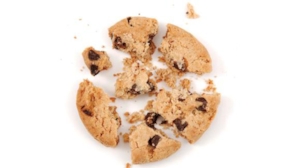
Cannabis advocates in California have just 6 more days to submit written responses to the California Bureau of Cannabis Control (BCC) in regard to the most recent set of updated proposed regulations that will soon legally define the state’s adult use market and cannabis products.
The lengthy document of regulations spans over 160 pages and covers virtually every aspect of the Prop 64 landscape and will have a major impact on who can do business in Cali, and how they will have to do it.
There are many controversial points being raised by the new changes as the battle between craft vs. corporate cannabis continues to rage on.
One recent amendment to the proposed regulations that initially flew under the radar a bit was in § 5724. Cannabinoid Testing
As you may or may not know, Prop 64 mandates that all “recreational”, or adult-use, cannabis edibles be capped at 10mg of THC per serving and a total of 100mg of THC total in each package.
This is a ridiculous rule that only hurts the consumer who is forced to not only pay for more product and packaging to satisfy their personal tolerance level, but must literally consume more food to get the THC uptake they desire.
Here is how the language in the regulations reads:
(1) For all edible cannabis products, the milligrams per serving for THC does not exceed 10 milligrams per serving.
It’s the next line, however, that has the industry up in arms. After the July round of regulation proposals, the line read:
For edible cannabis products that are not orally-dissolving products labeled “FOR MEDICAL USE ONLY”, the milligrams per package for THC does not exceed 100 milligrams per package with a cannabinoid serving size greater than 5.1 mg, and for all cannabis goods, the concentration of any one cannabinoid shall not exceed the labeled content of the cannabinoid, plus or minus 10.0%.
But when the final proposed regs were released earlier this month, that line had been changed and now the bit at the end about the 10% variance allowed in potency has been stricken out, meaning the BCC intends to do away with allowing cannabis edibles manufacturers a buffer between what they believe their product should test at, and what the test results actually come back at.
So, for example, if an edible manufacturer has a time-tested recipe that consistently produces 100mg edibles in their own R&D process, they still need to send that product off to a 3rd party testing lab to verify that potency.

These labs are notoriously inaccurate and inconsistent, and many of them claim to have as high as a 20% variance in their results. So the same exact product can be tested by the same exact lab and get wildly different results.
This was an inconvenience at worst in the old days, but now under the intense scrutiny of the state, it is leading to failed batches of product and huge costs to already struggling manufacturers.
With a 10% cushion, they at least stood a chance of meeting compliance standards.
If these new proposals stay as written though, how can these companies be expected to meet those standards when the data being compiled by the 3rd party testing labs is so unreliable?
Will this move drive another nail into the coffin of the legal edibles market in California?
If a batch is deemed non-compliant due to potency overages – either on individual servings or overall package strength – the state offers little recourse for remediation. You can’t just melt the chocolate back down to dilute and reapportion it.
In fact, § 5506.1 Microbusiness Failed Manufactured Cannabis Product Batches states that:
Edible cannabis products that fail laboratory testing requirements shall not be remediated or reprocessed and shall be destroyed. If any edible cannabis product that has failed laboratory testing is remediated, reprocessed, or otherwise mixed with another batch of cannabis product, such action shall render the final cannabis product adulterated, as defined in Business and Professions Code section 26131, regardless of the defect level of the final cannabis product.


So, essentially, if you were aiming for 100mg, and XYZ Lab says you are actually at 101mg or 102mg, you have little recourse but to destroy the entire batch. There is an appeal process of sorts that a manufacturer can take up with the Bureau by submitting a corrective action plan and jumping through some hoops, but that process is expected to be time consuming and costly when compared to trashing a bad batch and starting over.
The most likely outcome, should these revisions make it to the final law of the land, is that edibles manufacturers will now label their products as containing the full allowable 100mg per package, but will give themselves the 10% cushion back and really just aim for 90mg per package.
Then, if the lab-of-the-day sends back test results that creep just over that 90mg, they are still in compliance potency-wise.
Once again, the consumer will be the one paying for this, quite literally.

What other industry is so overregulated by the government that they need to shortchange their consumers by 10% of the product that they paid for just to avoid an unforeseeable compliance violation?
Even when the Bureau was willing to give the manufacturers a 10% variance, and even if lab testing could meet the most basic tenets of the scientific method (like reproducing results consistently…imagine that), manufacturers in almost any field will tell you that 10% is a tight target to hit. Now even that has been stripped.
Well, not yet it hasn’t.
As mentioned, the BCC is receiving commentary through November 5th on this issue, and all issues raised by this final set of proposed regulations. Many beneficial changes to these proposed regs have come about thanks to the tireless work of cannabis advocates like you reaching out to the BCC and offering your perspectives. By the end of this year, your voice on this issue may be silenced so if you want to speak up do it now.
To make your opinion known, written comments can be (respectfully) submitted up until November 5th, 2018 to:
Lori Ajax
Chief Bureau of Cannabis Control
2920 Kilgore Road Rancho Cordova, CA 95670
E-mail: BCC.comments@dca.ca.gov
Keep updated on all the latest news and updates in the Cannabis industry here at Beard Bros Pharms by signing for our Friday Sesh Newsletter here. Always Dank and Never Spam!
















